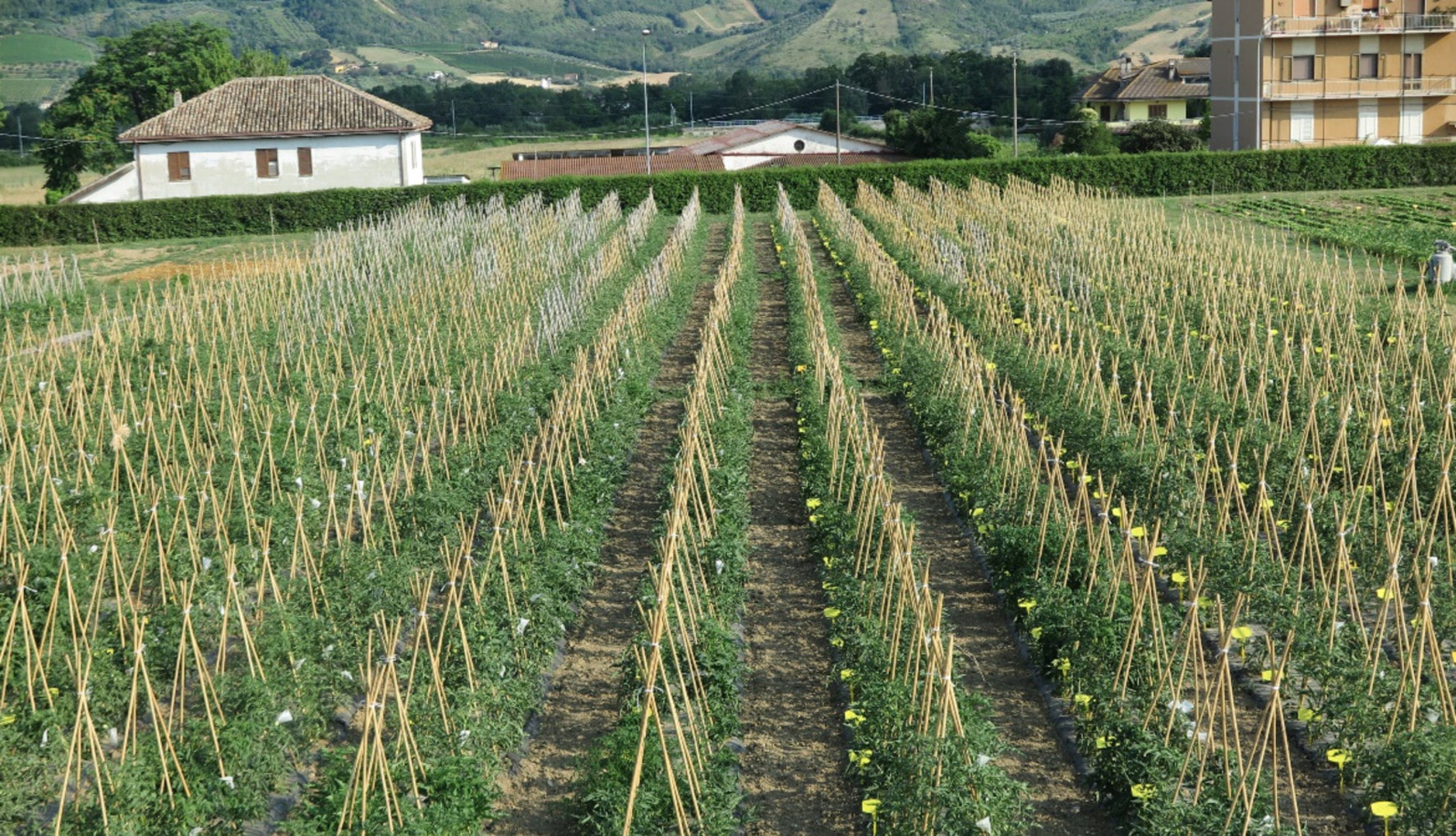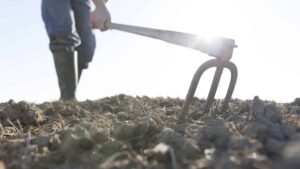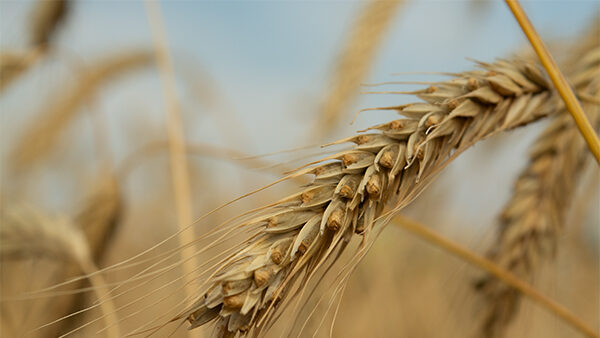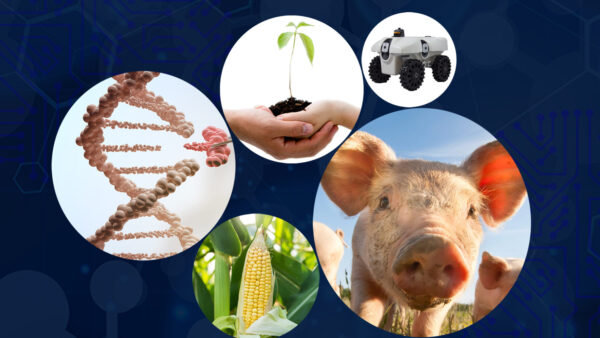Not so Frequently Asked Questions – Part 1
Not so long ago, I was fortunate enough to moderate the Workshop on Potentialities and Challenges of Breeding for the Vegetable Organic Systems in Almeria, Spain. This allowed me to dive into this niche, yet steadily growing sector in the EU. Did you know that in 2018, organic farming covered 13.4 million hectares of agricultural land in the EU-28, which is about 7.5 % of the total utilised agricultural area. The countries with the highest shares of organic land were Austria, Estonia and Sweden. With a steady growth in demand and a recent update to the EU Regulation on Organic Production, it was time for European Seed to dive into this sector.
And rather than posing a few standard questions about organic breeding and organic agriculture, (a format that has been applied several times before already), it felt more interesting to confront the Workshop speakers with some deliberately thought-provoking statements which are often used by critics to undermine the organic sector. I wanted to allow the various presenters to provide their own answers to such criticism, so I spoke with Jaime Prohens, Director at the Institute for the Conservation and Improvement of Valencian Agro-diversity (COMAV) at the Polytechnic University of Valencia (UPV) in Spain, Teodoro Cardi, Director of the Research Centre for Vegetables and Ornamental Crops in Italy, and with César Gonzalez, Manager Public Affairs at Euroseeds in Brussels, Belgium.
European Seed (ES): Can you please explain in a nutshell your organization, and how you are contributing to the improvement of organic agriculture.
Prohens shares that the Polytechnic University of Valencia in Spain is a public university devoted to education and research mostly in technological subjects. “My contribution to organic agriculture is through breeding vegetable cultivars specifically adapted to organic conditions and with improved water and nutrients use efficiency and more resilient.”
The Research Centre for Vegetable and Ornamental Crops is part of CREA (Council for Agricultural Research and Economics), says Cardi. “It has four sites, with research, albeit focused on vegetables and ornamentals, spanning from genomics and biotechnology-based breeding, to development of innovative agronomic systems, including soilless ones, and eco-friendly methods for pest and disease management. A number of research lines are particularly devoted to organic horticulture.”
The centre has a certified organic experimental farm in Monsampolo del Tronto in Central Italy. Therein, a long-term experiment (MOVE-LTE, MOnsampolo organic VEgetable – Long Term field Experiment) has been going on 20 years now. Cardi mentions that four years crop rotations, including cash and cover crops, and intercropping experiments are being performed in the framework of several national and international projects, monitoring their effect on chemical and biological quality of soils, and on productivity and nutritional/organoleptic quality of crops. Furthermore, participatory and conventional breeding programmes are being carried out in tomato to select genotypes adapted to organic systems.
Euroseeds is the voice of the European seed sector, says Gonzalez. “We therefore represent the interests of those active in research, breeding, production and marketing of seeds of agricultural, horticultural and ornamental plant species. Euroseeds’ represented companies are the biggest suppliers of seeds for organic farming, with approximately 90 to 95% of the market.”
ES: Why is it important to devote more attention to organic agriculture in Europe?
During the last years, there has been a constant increase of agricultural land dedicated to organic farming in Europe as a reflection of the evolution of the EU organic market, says Gonzalez. “This has led to more companies active in the sector and an increased availability of high-quality seeds suitable for organic farming. By doing so, breeders respond to a genuine demand from farmers and consumers,” he says. “However, more attention should be put on the fact that with increasing pressure on agricultural land and organic food demand on rise, the yield gap with conventional farming should be reduced. Otherwise, imports of organic food will continue rising which has negative consequences on GHG emissions.”
[tweetshareinline tweet=”With increasing pressure on agricultural land and organic food demand on rise, the yield gap of organic farming with conventional farming should be reduced.” username=”ac9005dca5d695555710bfaf7bb2c6c1″]
For Prohens, the main reason is there is a clear increase in demand by consumers and because of the higher prices, it can contribute to maintaining rural communities.
Agri-systems in Europe are quite diverse, in terms of environments, crops and markets. In recent years, customers have paid more attention to product quality and aspects related to ecological impact of agriculture and were ready to pay higher prices for what they perceive ‘high quality’ products, says Cardi. “Although, in a general sense, ‘high quality agriculture’ is not related only to organic agriculture, it is true that the latter is perceived as a major component to obtain healthier and more sustainable products,” he adds.
In a highly diversified agricultural context, organic agriculture can play a significant role to increase the value of agricultural chains and the income of farmers, at least in some areas. “Nevertheless, more attention is needed in research aimed to reduce pitfalls of organic agriculture, in order to increase productivity and ability to manage old and new phytosanitary emergencies,” says Cardi.
[tweetshareinline tweet=”In a highly diversified agricultural context, organic agriculture can play a significant role to increase the value of agricultural chains and the income of farmers, at least in some areas.” username=”ac9005dca5d695555710bfaf7bb2c6c1″]
ES: EU Regulation 2018/848 has recently been approved and will soon come into force. Is this a step in the good direction?
“I think so,” says Prohens. “It goes in the direction of providing consumers with a guarantee that organic food has been produced under the highest standards of complying with organic production principles.”
Cardi says the new Regulation is a good step forward since it gives a comprehensive frame of all different aspects of the organic chain, including production and transformation, and import-export rules, both in plants and animals. “Some specific points, however, should be revised. The importance of selecting genetic materials adapted to organic agriculture is underlined, but, nevertheless, in my opinion, the text limits too much the tools that can be used,” he adds. “In order to obtain disease and pest resistant materials, and compensate the productivity gap, it is necessary to exploit genetic pools beyond natural crossability, exploiting technologies like embryo rescue and others. I can somehow understand that transgenic products are not accepted, but mutagenesis, somatic hybridization, and new (not transgenic) biotechnologies should be welcomed.”
“Some of the provisions in the Regulation go in the right direction, for instance, limiting the derogations,” says Gonzalez. “This is something that Euroseeds has long advocated for and, for instance, nowadays seed propagated under certified organic conditions has become the most common reproductive material used in organic farming. Other provisions included in the Regulation are still under discussion (organic heterogeneous material and the so-called ‘organic varieties’),” he adds.
According to Gonzalez, different types of reproductive material should be available to the diversity of organic farmers, provided that organic seed is not established as a minor quality category of seed (i.e. identity, performance, reliability). “This will be the decisive factor to determine whether it is a step in the good direction or no,” he says.
ES: The EU has initiated several Horizon 2020 projects on organics (e.g. BRESOV, LIVESEED etc.). Is the money well spent?
“Yes, because they address the challenges of organic agriculture, for which little specific research has been done compared to its importance,” says Prohens. “Even for detractors of organic agriculture it has to be taken into account that most of the research made for resilience, water and nutrient use efficiency, or quality is also of interest for conventional agriculture.”
Gonzalez indicates that research is needed in agriculture in order to help farmers to remain competitive, including organic farmers. “That being said, as for conventional, research in organics will not be successful if there is no business involvement and no real on-farm applications are identified.”
“Surely yes,” says Cardi. “The organic sector needs more research. This, however, should be open to new technologies, whose results should be wisely implemented in practice. The two projects mentioned are using, although at different rate and with a different scope, advanced technologies. I think the two projects and expected results are complementary, considering also that organic agriculture is not always the same.”
ES: Some say that seed company investment decisions are driven by farmer’s needs, not by consumer preferences. What is your take on this?
For Gonzalez, it is the farmers that play a key role on deciding about investments, but they are not the only ones who have a say on it. “On the one hand, for certain crops such as potatoes or vegetables, specific consumer choices and preferences are the driving force of breeding (maybe even more than farmers’ needs),” he says. “On the other hand, for instance, for the last decades, breeders have been working on new varieties with higher yields and improved resource use efficiency (nitrogen, water). This is a clear example on how to combine farmers’ needs with the citizens’ request for more sustainable agriculture.”
“I do not think this is true anymore,” says Cardi. “Probably, in the past, yield was the only objective of breeding companies, but now, more and more, quality aspects, including taste, nutritional content, etc., are primary breeding objectives. Even the management of pathogens and pests through the use of resistant genotypes is an aspect that should be appreciated by consumers since it guarantees healthier products and lower environmental impact.”
Prohens thinks that this may be a transient situation, but in the end consumers preferences prevail. “If consumers are demanding and willing to pay for a certain product, farmers will be driven to produce according to consumers demands,” he says.
[tweetshareinline tweet=”If consumers are demanding and willing to pay for a certain product, farmers will be driven to produce according to consumers demands.” username=”ac9005dca5d695555710bfaf7bb2c6c1″]
ES: On average, organic plant breeding programmes take more time, are perhaps less efficient and possibly also riskier. Would you say that such an approach serves the organic sector well?
“No. As I mentioned before, I think that organic plant breeding programmes should take advantage of new technologies,” says Cardi. “They cannot rely only on crossing sexually compatible parents. They would be less efficient in terms of time and results.”
Prohens also does not agree with the statement. “Organic plant breeding can make use of many tools of modern biotechnology, such as molecular markers, that allow improving the efficiency of breeding. By taking into account that organic breeding puts a lot of emphasis on genotype X environment interactions, it can increase the diversity of the agricultural ecosystem. So, I consider it serves the purpose of the organic sector,” he says.
Editors Note: This was part 1 in a two piece series. Part 2 will appear in a subsequent issue of European Seed, and will address heterogeneous varieties, levels of uniformity, the use of GMO’s, pesticides and new breeding techniques in organic agriculture and the yield of organic varieties.












